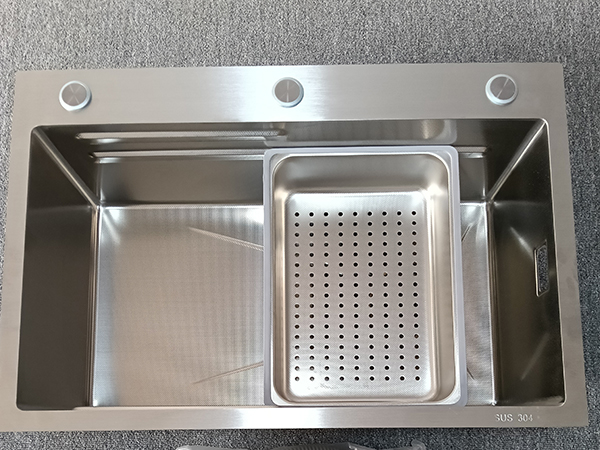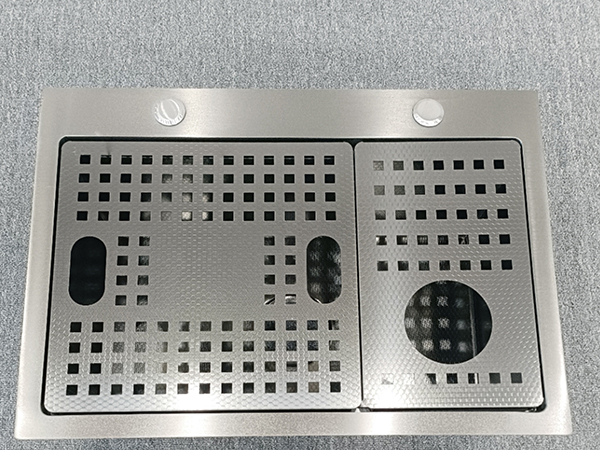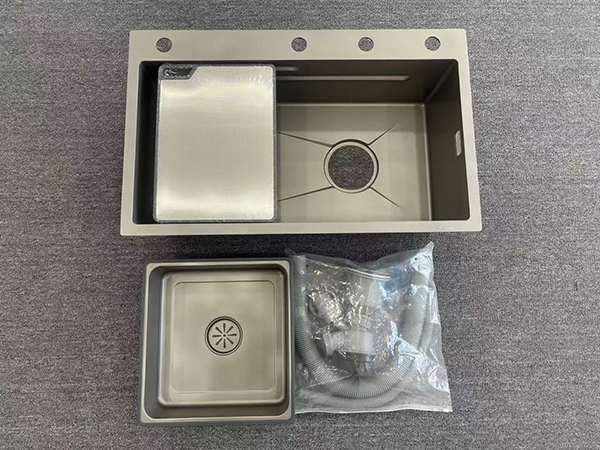Possible issues that may arise during the use and installation of kitchen sinks
2025-05-12 14:51:15
There may be various problems during the use and installation of kitchen sinks, and the following are some common issues:
The sink is leaking
Leakage at the connection between the sink and the countertop: It may be due to aging, cracking, or uneven application of the sealant, causing water to seep out from the gaps. The solution is to clean the old sealant first, and then reapply high-quality glass sealant or sealant.
The sink itself is damaged and leaking: During long-term use, the sink may develop cracks or holes due to impact, wear, or corrosion. If the damage is minor, specialized sink repair agents can be used for repair; If the damage is significant, a new sink may need to be replaced.
Leakage at the connection of drainage pipes: Loose joints, poor sealing, or aging and cracking of drainage pipes can all lead to water leakage. It is necessary to check whether the sealing rings at each interface are intact and whether there are cracks in the pipeline. If there are any problems, replace the sealing rings or pipelines in a timely manner, and use tools such as pipe clamps to tighten the interfaces.
Sink blockage
Food residue blockage: In daily use, food residues such as vegetable leaves, fruit peels, rice grains, etc. are prone to enter the drainage outlet of the sink and accumulate together, causing blockage. You can use a sink filter to intercept food residue and clean the filter regularly. If it is already blocked, pipeline dredging agent can be used for dredging, or physical dredging can be carried out with tools such as leather plugs.
Oil condensation blockage: Oil in the kitchen is prone to condensation on the inner wall of the drainage pipe, which gradually reduces the inner diameter of the pipe over time, ultimately leading to blockage. Regularly rinse the drainage pipes with hot water and detergent to dissolve grease. If the blockage is severe, it may be necessary to dismantle some pipes for cleaning.
Foreign object blockage: Small objects that accidentally fall into the drainage outlet of the sink, such as chopsticks, spoons, hairpins, etc., may also cause blockage. In this case, it is necessary to use professional pipeline dredging tools such as wire hooks to remove foreign objects.
Rusty sink
Material issue: If the quality of the sink material is poor and the content of anti rust elements such as chromium and nickel is insufficient, it is easy to rust in an environment that is exposed to water and air for a long time. It is recommended to choose high-quality and reliable stainless steel sinks, or sinks with special rust prevention treatment on the surface.
Environmental issues: Corrosive substances such as acid and alkali in the kitchen, if splashed onto the surface of the sink and not cleaned in time, may damage the anti rust layer of the sink and cause rusting. Pay attention to keeping the sink clean, promptly wipe off any stains and water stains that splash onto the sink, and avoid prolonged contact of corrosive substances with the sink.
Scratch damage: During use, if sharp kitchen utensils are used to scrape in the sink, or when cleaning items with sharp edges, it may scratch the rust proof layer on the sink surface, leading to rusting. When using, try to avoid contact between sharp objects and the surface of the sink. If there are slight scratches, stainless steel polishing agent can be used for repair.
Unstable installation of sink
Loose fixation during installation: If the sink is not properly secured to the countertop or cabinet during installation, or if the fixing screws are not tightened, the sink may become loose after a period of use. It is necessary to recheck the fixing screws and installation brackets to securely fix the sink to the countertop.
Cabinet deformation: If the cabinet deforms due to moisture, excessive load-bearing, or other reasons, it may cause unstable installation of the sink. To solve the problem of cabinet deformation first, reinforce or repair the cabinet, and then readjust the installation position of the sink to ensure a stable installation.
In addition, kitchen sinks may also have problems such as poor water flow and loud sink noise. When selecting and using a kitchen sink, it is important to choose the appropriate material, size, and style, install and use it correctly, and regularly maintain and upkeep it to reduce the occurrence of problems.

Here are some methods for cleaning and maintaining a Kitchen Single Sink:Timely cleaning:Im...

Here are some effective methods for removing water stains and dirt from Stainless Steel Sin...

To prevent the occurrence of water stains and dirt on stainless steel kitchen sinks, one ca...

Vegetable Washing Basin Key Features to Consider: MaterialCraftsmanship 304 stainless steel...


